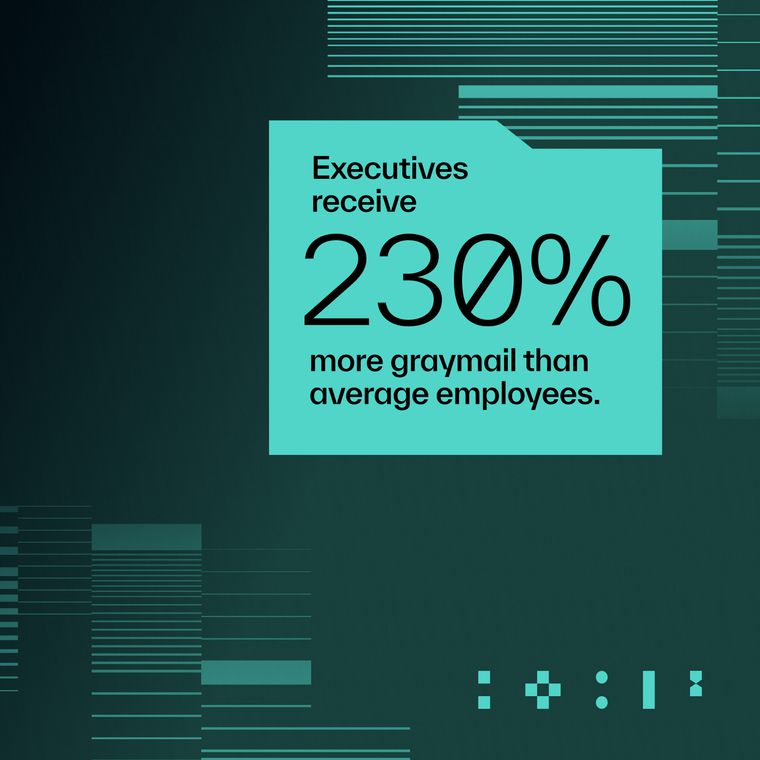How Security Teams Use AI Data Analyst to Elevate Reporting
Explore the real questions customers ask AI Data Analyst to measure risk, prove ROI, and deliver reporting tailored for executives and boardrooms.
October 6, 2025
/
5 min read

When Abnormal introduced AI Data Analyst, the goal was clear: deliver immediate visibility into security outcomes without adding extra burden to the SOC. Instead of navigating multiple dashboards or building custom queries, teams can ask questions in natural language and receive executive-ready answers in seconds.
Organizations are already using AI Data Analyst to streamline operations, quantify security impact, and gain a deeper understanding of organizational risk. The questions customers ask reveal how security teams rely on the platform at every level of their work, from the boardroom to routine SOC tasks. Collectively, they align into five categories that capture the most common—and most valuable—ways AI Data Analyst is used today.
1. Reports and Decks: Ready for the Board
CISOs and security leaders frequently turn to AI Data Analyst to generate comprehensive reports and slide decks. These outputs distill attack activity and demonstrate the value of Abnormal in a format tailored for leadership and board visibility.
Example questions:
“Please create a CISO report that covers the last 12 months.”
“Please send a CISO report.”
“Generate a report for me, please.”
Nearly one in five customer questions falls into this category, demonstrating that AI Data Analyst has become a trusted tool for preparing board-level content. With executive reporting covered, many teams then turn to metrics and trend analysis to understand the activity behind those narratives.
2. Metrics and Trends: Clarity in the Numbers
One of the most frequent ways customers use AI Data Analyst is to measure email activity over time. Security teams ask about volumes, averages, and comparisons across different periods to track threat trends and validate detection performance. The tool delivers precise results in seconds, giving teams confidence in both day-to-day operations and long-term planning.
Example questions:
“What is the average number of emails sent to user X over the last 30 days?”
“Can you exclude weekends from that average?”
“Provide more granular detection accuracy trends for the past few quarters.”
This category represents roughly 40 percent* of all customer questions, demonstrating the central role of AI Data Analyst in quantifying changes in threat activity and security posture. From tracking these numbers, the natural next step is translating those measurements into business value and return on investment.
*Percentages reflect share of customer questions; categories may overlap.
3. Business Value and ROI: Proving the Impact
Executives expect more than raw attack counts. They want to see evidence of reduced risk, lowered financial exposure, and measurable cost savings. AI Data Analyst delivers these metrics directly, making it easier for organizations to connect security outcomes to business value.
Example questions:
“How much would we have saved with graymail?”
“Show me an email detection funnel with ROI metrics for June.”
“What is the ROI summary for our deployment?”
Roughly 15 percent of customer questions fall into this category, reflecting how leaders use AI Data Analyst to strengthen budget conversations and show tangible returns.
4. Incident and Campaign Analysis: Exposing Active Threats
In addition to the above categories, security practitioners use AI Data Analyst to uncover phishing campaigns, suspicious senders, and industry-specific threats. These questions show the progression from broad reporting to targeted intelligence that enables faster response.
Example questions:
- “Which job roles are the most frequently targeted for email-based threats?”
In response, AI Data Analyst broke down which functions (executives, finance, IT) were most targeted, along with threat type summaries.
- “What are the stats on emails from [email address]?”
In response, AI Data Analyst provided sender-specific stats, flagging how many were classified as spam, threats, or clean.
- “Are we seeing phishing campaigns exploiting Microsoft 365’s Direct Send feature?”
In response, AI Data Analyst surfaced details on ongoing campaign tactics.
Roughly 20 percent of customer questions involve active threats and campaigns, highlighting AI Data Analyst as a go-to source for fast, targeted threat intelligence.
5. Routine Tasks: Quick Wins at Scale
Alongside deep analysis, the Abnormal platform lightens everyday workload with fast answers to routine inquiries. Many customer questions are simple, day-to-day requests that otherwise chip away at SOC capacity—pulling attack counts, resending data, or breaking down trends by timeframe. AI Data Analyst handles these instantly, removing the manual lift from routine operations.
Example questions:
“How many attacks did we block last month?”
“Send again as an attachment.”
“Can you provide a quarter-by-quarter breakdown of spam threats?”
About 10 percent of customer questions fall into this category. Each one represents time saved, budget efficiency gained, and analyst focus returned to higher-value security priorities.
Key Themes Emerging
The patterns among customer inquiries point to three broader themes shaping modern security reporting:
Industry Benchmarking: Comparing performance and risk posture to peers and sector averages.
Threat Awareness and Pattern Recognition: Identifying which campaigns, senders, or user roles are most at risk.
Strategic Security Posture: Using long-term trend analysis to inform planning, compliance, and investment decisions.
Together, these themes demonstrate that AI Data Analyst extends beyond quick answers to become a foundation for broader strategy and security governance.
Making the Most of AI Data Analyst
AI Data Analyst demonstrably reduces time spent on repetitive reporting and analysis, returning hours each week to the SOC. Many Abnormal customers who already use it as part of their routine save three to five hours weekly while strengthening executive communication and enabling faster, data-driven decisions.
The value comes from how seamlessly the tool fits into existing workflows. Preparing for the board? Ask for a CISO report. Explaining a trend? Ask for detection accuracy over time. Curious about industry context? Ask how your attack volume compares. Each answer arrives in seconds, without adding complexity or manual work.
Every Abnormal customer has access to this capability at no additional cost. If your team hasn’t yet tried AI Data Analyst, send a prompt to abby@abnormalsecurity.com to see it in action. Abby—the Abnormal Data Concierge that powers AI Data Analyst—will respond with an instant, leadership-ready answer.
Here are five questions customers often use to begin:
“How many attacks did we block last month?”
“Which job roles are most frequently targeted in my organization?”
“Provide a quarter-by-quarter breakdown of spam threats.”
“What is the ROI summary for our deployment?”
“How does our attack volume compare to others in our industry?”
Each question uncovers insights, communicates value, and strengthens security posture without creating more work for the SOC.
The Future of Security Intelligence
AI Data Analyst is only the beginning. Abby is evolving to become the central concierge for security data across the Abnormal platform, connecting signals from every source and surfacing the answers that matter most. With new specialized agents on the way, these capabilities will address an even broader range of security challenges. Teams that begin using AI Data Analyst today will be best positioned to benefit from the expanded Abnormal capabilities as they arrive.
Curious to see how Abnormal leverages AI agents to transform SOC productivity and reporting? Schedule a demo today.
Related Posts
Get the Latest Email Security Insights
Subscribe to our newsletter to receive updates on the latest attacks and new trends in the email threat landscape.


